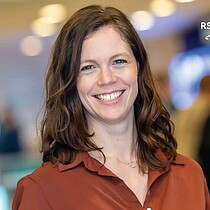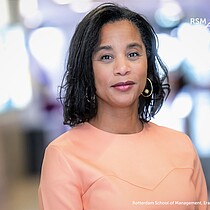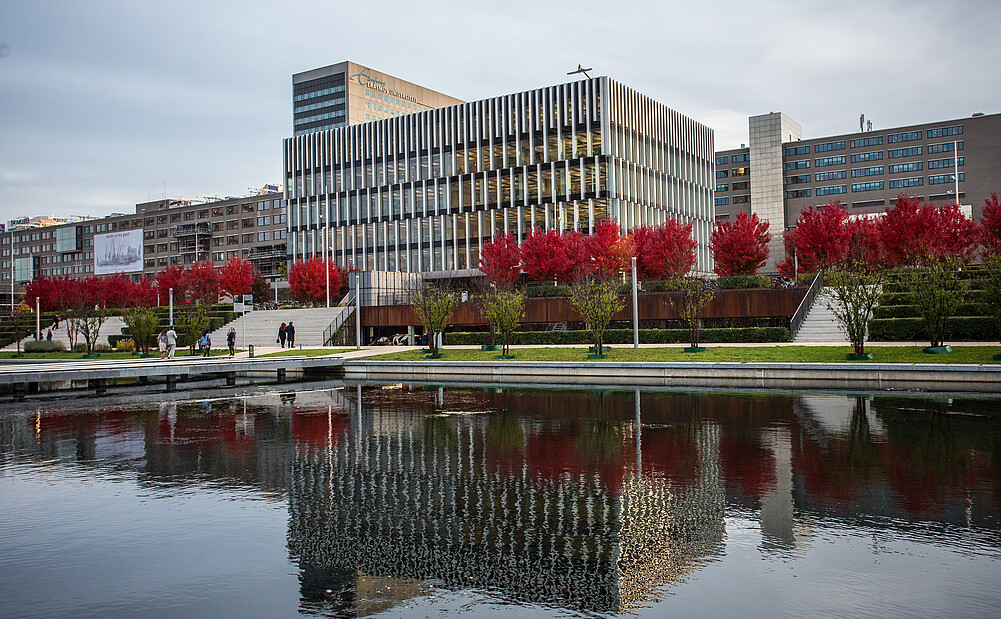

Article: Thursday, 23 November 2017
When companies need to boost creativity to produce a more competitive end product or service, it is natural to assume that teamwork will be the key. That said, individual creative ability can often lead to the best collective outcome. How companies manage this delicate balance between utilising the best talents while keeping everyone feeling involved is more complex than just getting everyone to work together harmoniously.
In industries where there is an incessant need to innovate in order to beat off competition, having the right creative resources in-house is essential. IT and telecommunications are just two examples of sectors where a company cannot afford to stand still for long – existing products have to be renewed, re-booted, re-thought and re-launched to quench the thirst of consumers for the latest version while staying ahead of market rivals.
Some of the most famous examples are inevitably associated with the original brains behind the idea – for Virgin think Richard Branson, for Apple think Steve Jobs, for Microsoft think Bill Gates, for Facebook think Mark Zuckerberg… There is no denying the pivotal role that the creative genius of such individuals played from the outset. However, what companies looking at such examples need to grasp is how to juggle outstanding talents with the more subordinate members of their creativity teams. In short, how to balance team workers and flair players?

Businesses seek to generate what is known as the “capital of creativity” with several objectives in mind – to revolutionise existing industry standards, raise public expectation, make a profit, and extend their long-term reputation. This is achieved via successful teamwork, as opposed to individual efforts or an all-encompassing corporate approach. If all goes to plan, successful in-house collaboration between team members will give the companies in question a competitive advantage over their rivals, create jobs to achieve these objectives, become more financially stable, receive higher levels of income, and enjoy longer-perspective financial prosperity. No one is claiming the process is easy. Executive decisions have to be made in terms of existing resources, how best to invest in them, and what additional resources need to be brought in to pull off such a plan.
One of the first questions that senior managers and HR professionals should be posing themselves is as simple as the above strategic plan – do we plough our money into individual creative brilliance or pool our resources by managing and strategically planning teamwork? If creative ability does not already exist within a company then it can be recruited, so what this question underlines is that the generation of the capital of creativity is ultimately an organisational issue. Team creativity has to be nurtured over a period of time in order to devise an innovative product, service, process, strategy or idea. This involves a collective sharing and elaboration of information to achieve certain business goals. However, “collective” does not necessarily mean that everyone enjoys the same level of input into and contribution towards the final outcome.
Whether it is senior managers investigating how to allocate existing resources or HR heads trying to identify new talent, both face the same dilemma. The company wants to achieve a collective result but to what extent is the process collective or based on individuals. To use a sporting analogy, do you prioritise your Most Valuable Player or do you opt for a more balanced group effort?
Eric Cantona, the famously gifted and charismatic French footballer of the 1990s, was widely viewed as the most naturally talented of his generation. However, he was eventually evicted from the national team, which subsequently went on to win the World Cup in 1998 under the dour but effective leadership of Didier Deschamps, who Cantona had famously labelled as a “water-carrier”, meaning a player with no defining talent. On that occasion, the pooling together of resources proved more successful than reliance on individual brilliance. On the flipside, the same Cantona transformed a struggling Manchester United and undoubtedly contributed significantly towards their success during his time with the team. Clearly, there is no one-size-fits-all solution to creativity in any type of professional organisation.
Whether one is operating in corporate, sporting or other circles, there exists one common denominator. Before a final creative decision is taken, information and ideas have to be generated, shared and elaborated. Research into this aspect of teamwork in business has so far assumed that this can only truly be carried out based on an “additive” model, where everyone’s contribution has some impact on the final decision. This is all very well for companies that operate 24/7 via brainstorming but this cannot be the reality of day-to-day business.
At some point someone has to sift through the various ideas being shared and reach a decision. Above all, it is unrealistic to assume that all members of a team share the same creative ability. It is for this reason that greater attention needs to be paid to an alternative mode – a “disjunctive” model, where the creative “star” has the most say in the final outcome. However, the wisdom of such a model needs to be tested by taking into account the conditions in which a company is working.
A recent study into resource allocation options for companies seeking to boost creativity approaches the issue from a number of angles. An empirical study focusing on sales teams of 75 bakery stores from one company in the central part of China was conducted via surveys sent to team leaders and sales members, as well as corporate assessments obtained from the company’s HR department. The objective? To establish the link between the level of information generated, elaborated and shared at a lower level before being passed up the ladder and the resultant impact that the “creative star” has on the final outcome. The second phase of the study, conducted via a systematic review of team creativity studies, was designed to understand how much the professional conditions (namely the level of task demand and the technical level of the industry in question) influence the final choice of additive or disjunctive working model.
The first clear signs to emerge from the study regard the creative star-versus-team player dynamic. In short, the lower the extent to which information is created and elaborated from beneath, the higher the chances that the creative stars behind an initiative will produce results. This is by no means to say that all businesses should put all their money on one individual, hence the second phase of the study that investigates the quandary at task and industry level. The key to the study is to identify, according to set-up and conditions, whether the additive or disjunctive model will provide a business with the most accurate means of predicting their creative potential.
Of the various results to emerge from the second phase, it is clear that companies operating in lower-tech industries where the level of task demand is lower can be much more confident when opting for a more all-round “team effort”. It is in the higher-pressure, more technical spheres of business that greater reliance should be placed on individual creative brilliance rather than consensus project management.
The issue deserves continued exploration, especially regarding what type of contribution individuals can bring to the team process. Are we talking purely in terms of original ideas and resources or innovative ways of working? The latter should certainly not be overlooked as the whole root of the problem for any business is how to get their human resources working together, regardless of to whom they eventually give the whip hand.
However, one thing is clear. Business practitioners evolving in industries where creativity is crucial need to get into their minds that the issue is, above all, one of resource allocation. Having the talent is one thing. Knowing how to organise and structure it and get all those elements of differing abilities to work together is another ball game entirely. But a careful choice between involving all in the process and giving the final word has to be made, once the industry- and task-specific conditions have been factored into the equation. A first-choice team does not always comprise just the top talents but also those who work together the best.
University of Groningen

This article draws inspiration from Yingjie Yuan’s PhD thesis (free download), The Emergence of Team Creativity: A social network perspective, published as part of the ERIM PhD Series Research in Management.
This article was published in RSM Discovery Magazine 31


Science Communication and Media Officer

Corporate Communications & PR Manager
Rotterdam School of Management, Erasmus University (RSM) is one of Europe’s top-ranked business schools. RSM provides ground-breaking research and education furthering excellence in all aspects of management and is based in the international port city of Rotterdam – a vital nexus of business, logistics and trade. RSM’s primary focus is on developing business leaders with international careers who can become a force for positive change by carrying their innovative mindset into a sustainable future. Our first-class range of bachelor, master, MBA, PhD and executive programmes encourage them to become to become critical, creative, caring and collaborative thinkers and doers.
